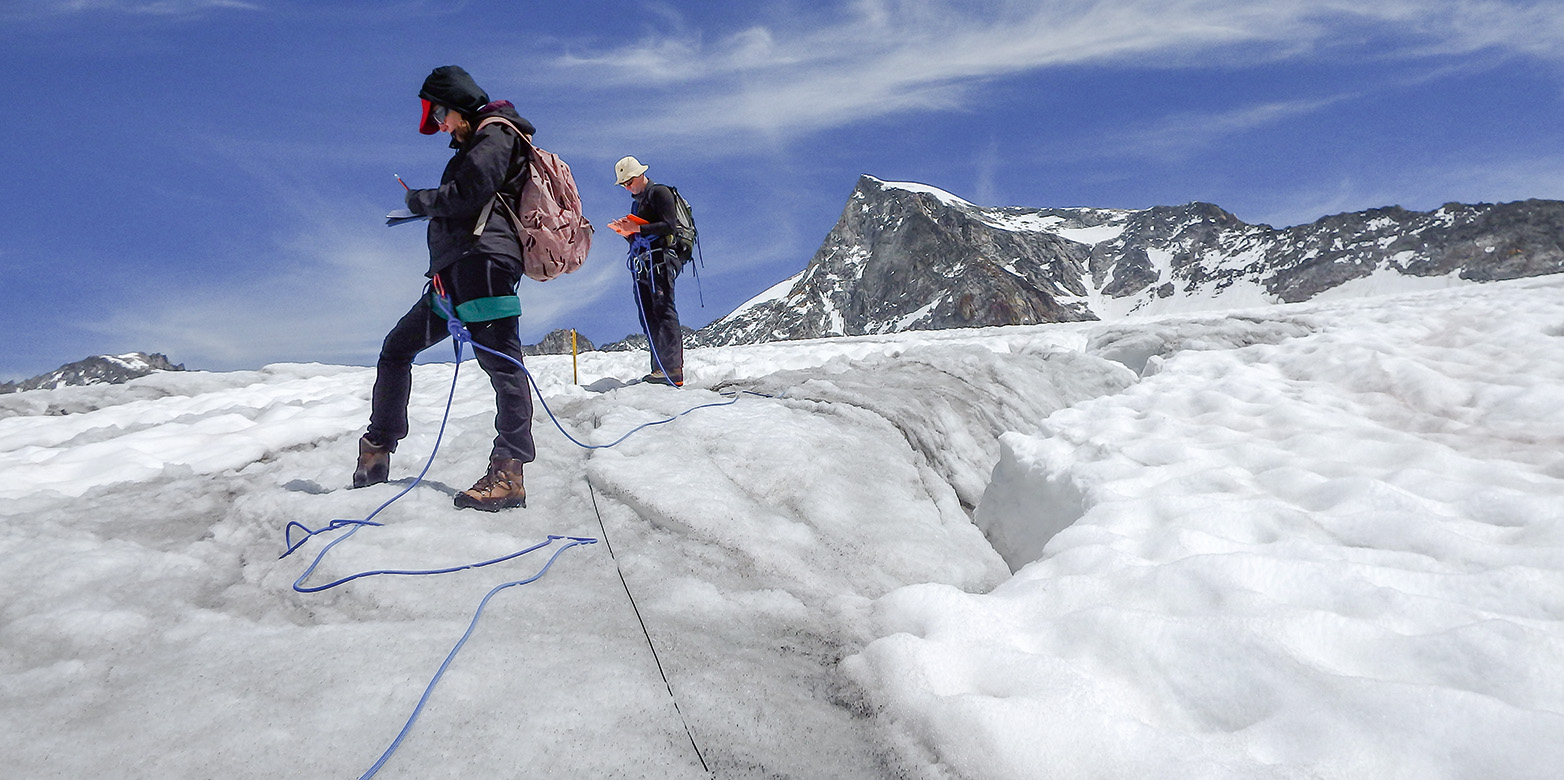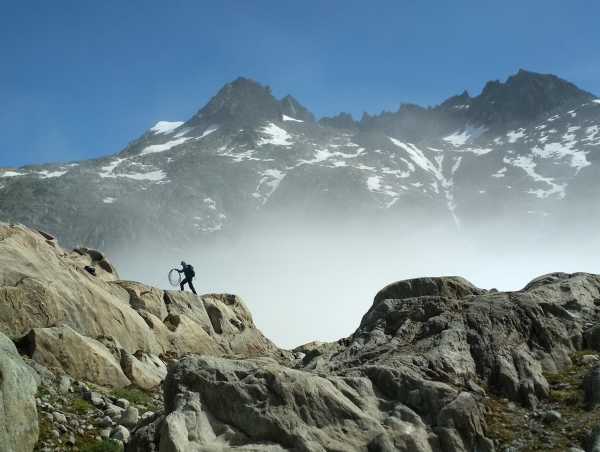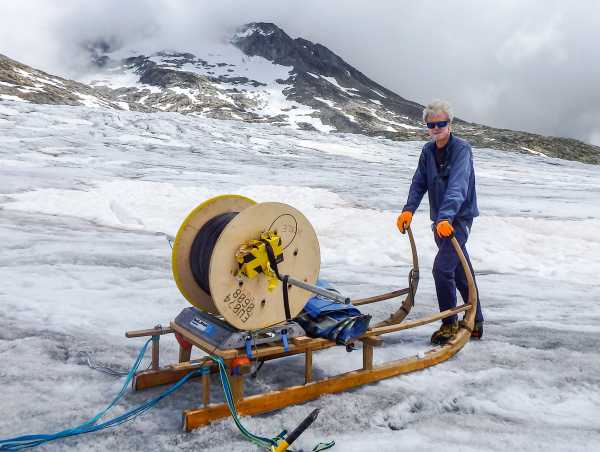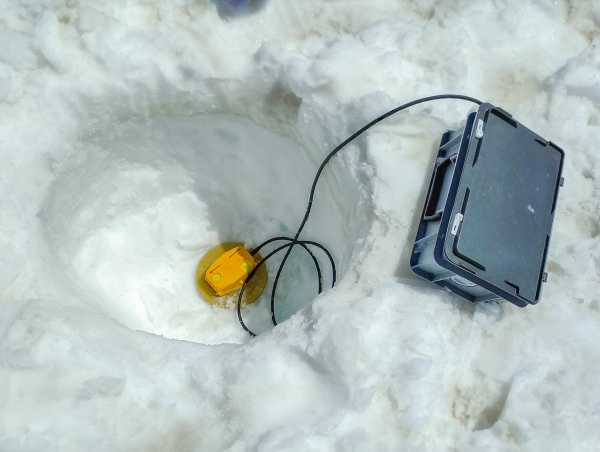Thousands of seismometers on a single cable
Fibre-optic cables are emerging as a valuable tool for geoscientists and glaciologists. They offer a relatively inexpensive way of measuring even the tiniest glacial earthquakes – plus they can also be used to obtain more accurate images of the geological subsurface in earthquake-prone megacities.

Today’s fibre-optic cables move data at tremendous speeds, enabling us to stream films and TV shows in HD or even 8K resolution. Modern telecommuters rely on these superfast broadband fibre-optic networks – but optical fibres also lend themselves to more unusual applications. For example, operators of critical infrastructure have long used fibre-optic cables to monitor their facilities. “The idea of using optical fibres for multiple purposes is nothing new,” says Andreas Fichtner, a professor of geophysics in the Department of Earth Sciences at ETH Zurich. Together with Fabian Walter, a professor at the Laboratory of Hydraulics, Hydrology and Glaciology (VAW), he is now exploring a new technique that could massively expand the potential applications of optical fibres. Working on the Rhône Glacier in the Swiss Alps, the two ETH professors are measuring tiny glacial earthquakes at a far greater resolution than ever before.
Fichtner’s primary interest lies in the potential that fibre-optic cables offer in seismology. As a glaciologist, Walter is determined to gain a better understanding of glacier movement and the associated seismic activity in the ice: “I’m particularly interested in tiny earthquakes that originate in the glacier bed.”
High-resolution measurements
In late June 2020, the researchers laid a nine-kilometre-long cable across the surface of the Rhône Glacier and connected it to a measuring instrument known as an interrogator. The researchers pitched their tents on the moraine and occupied them in week-long shifts for two months. Each week, a team of two was on site to monitor the equipment, replace the mobile hard drives when they were full and keep the power generator running.
The technique used by the researchers is relatively simple. Laser pulses of a specific wavelength are directed through the optical fibre in a continuous sequence. Any pressure or tension on the cable changes the pattern of the light waves that are scattered back towards the interrogator by tiny defects within the fibre. The interrogator measures the interference in the returning signals, enabling researchers to calculate where quakes occurred and how powerful they were. This can be determined at a very high spatial and temporal resolution. “You’re basically replacing thousands of seismometers with a single cable,” says Fichtner. Although the cable is less sensitive than a high-quality seismometer, it has the major advantage of offering a huge number of measurement points.
The quantity of data generated by this high-resolution method is enormous. “Analysing it will be a tremendous job,” Fichtner says with a smile. “We will have to come up with methods to cope with the sheer quantity of data.” They expect the measurement campaign to produce around 20 terabytes of raw data – ten to 100 times more than they would collect by distributing ten seismometers across the glacier.
Fichtner and Walter carried out their first tests with a short cable in the spring of 2019. These were presented in a scientific paper that recently appeared in the scientific journal Nature Communications. As well as confirming just how much potential their new technique has to offer, this paper also revealed that glacier quakes primarily occur in clusters, especially at the boundary between the ice and the glacier bed. Clusters of this kind would imply that the ice does not slide smoothly, but rather moves forward in a jerky motion. “That’s not what you would expect based on current theories,” explains Walter. “Glaciologists assumed that glaciers could slide because the glacier bed was well lubricated with meltwater.” Some of the mini quakes in the Rhône Glacier occur as often as once a second.
“My new hypothesis is that the sliding motion of glaciers is comparable to that of tectonic plates,” adds Walter. Most of the quakes measured in the Rhône Glacier have a magnitude of −1 to −2. “That’s roughly equivalent to ice cracking when you skate on a frozen lake,” he says. “It’s not something that you can feel like a real earthquake.”
In Antarctica, however, scientists have recorded glacial earthquakes with a magnitude of 3 to 4, and in one extreme case magnitude 7 (for comparison, the 2015 Gorkha quake in Nepal had a magnitude of 7.8). But there’s apparently one key difference: compared to conventional earthquakes, large-magnitude glacial quakes unfold slowly and can last for several minutes. That makes them less destructive than earthquakes that are caused by tectonic plate movement.
Fibre-optic networks to boost earthquake preparedness
Geophysicist Fichtner hopes to use fibre-optic cables for more than just measuring glacial earthquakes. He envisions one day using the fibre-optic networks in big cities to study the geological subsurface. Known as seismic tomography, this technique can be used to detect weak layers of rock and critical fractures. The goal is to map the subsurface by measuring the speed and duration of earthquake waves captured by fibre-optic cables. This would allow scientists to better assess the risk of earthquakes. One option might be to harness the fibre-optic networks of major conurbations that face significant danger from earthquakes, such as Istanbul, Athens and San Francisco.
Fichtner demonstrated how this could work by carrying out a feasibility study in Bern. Together with the internet service provider Switch, he and his team measured human-made seismic activity using a straight six-kilometre-long fibre-optic cable. “That’s equivalent to about 3,000 small seismometers. Setting up that many devices so close together is simply impossible,” says Fichtner.
He set up the interrogator in the server room at the University of Bern. The data from the fibre-optic cable ultimately allows the team to create a detailed map of the Bern subsurface. “The fibre geometry was very simple – that’s one reason why Bern was the ideal test site,” Fichtner reflects. Learning to harness even more complex fibre-optic networks is simply a matter of time, plus the possibility of performing the necessary measurements in big cities.
Geosciences at the Rohne Glacier



Comments
Additional comments are available for the German version of this article. Show all comments
Amazing !
What a smart idea, I never thought about using a cable to detect earthquakes. Although I'm impressed, I still disagree with some details: 1) "You’re basically replacing thousands of seismometers with a single cable,” .... actually, you need at least two cables to locate the origin of an earthquake on a two- dimensional surface. 2) I don't like the idea of replacing seismometers completely. A seismograph provides information about the direction of the movements. How can a cable measure if the movement goes from S- northbound, from E- westbound or up and down? And what about cracks in the ice cracking or rock fall vibrations, triggered by earthquakes? This might disrupt the measurement by eliminating or increasing the amplitude of the initial registrated earthquake.